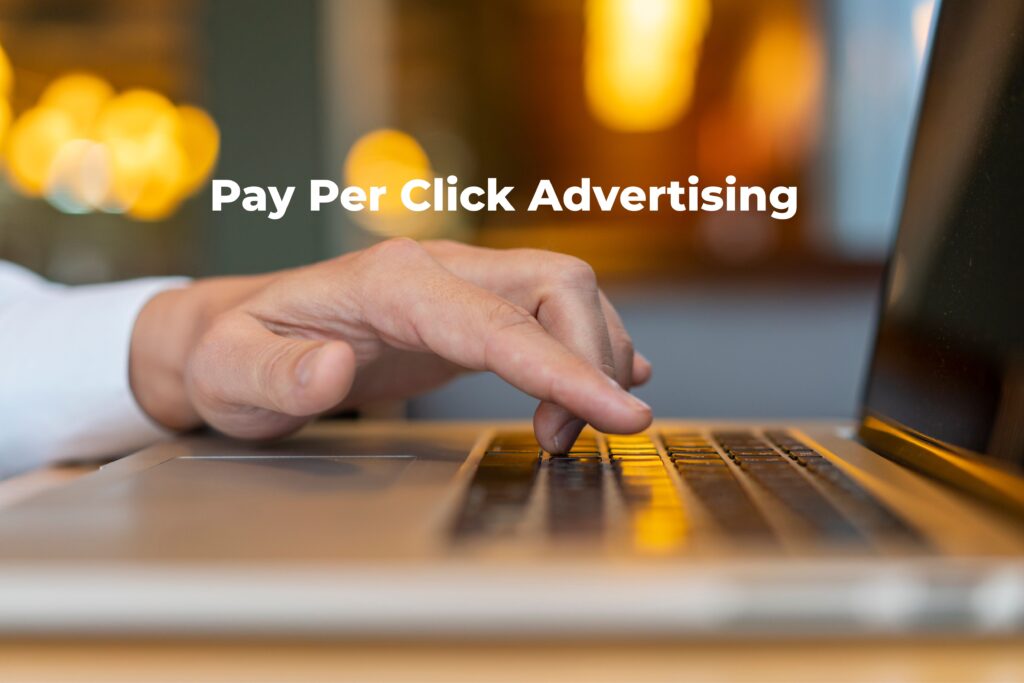PPC Advertising

What Is Pay-Per-Click (PPC) advertising
A highly effective online marketing strategy where advertisers pay a fee each time their ad is clicked. Instead of trying to earn visits organically, PPC allows businesses to buy visits and quickly drive targeted traffic to their websites. One of the most popular forms of PPC is search engine advertising, where ads are displayed on platforms like Google or Bing based on keywords that users search.

How PPC Works
PPC operates on a bidding system, particularly in search engine marketing (SEM). Advertisers bid on specific keywords related to their products or services, competing for ad placement in the search engine results pages (SERPs). When a user clicks on the ad, the advertiser pays a fee, hence the name “pay-per-click.” The goal is for the revenue generated from those clicks to outweigh the cost of the advertising.
PPC advertising is a data-driven, highly measurable marketing method that provides a fast and controlled way to attract targeted traffic. It gives businesses the opportunity to achieve immediate visibility and fine-tune their campaigns for maximum return on investment. With continual advancements in AI, automation, and cross-platform integration, PPC remains a cornerstone of digital marketing strategies.
Key Features of PPC:
Targeted Advertising: PPC allows you to target specific audiences through keywords, demographics, location, and device types, ensuring that your ad reaches users most likely to be interested.
Immediate Visibility: Unlike SEO (Search Engine Optimization), which can take time to yield results, PPC provides immediate visibility on search engines, making it ideal for businesses that want quick exposure.
Cost Control and Budgeting: PPC platforms offer the flexibility to set daily, weekly, or monthly budgets, so you only spend what you’re comfortable with. You also control how much you’re willing to bid for each click.
Ad Quality and Relevance: The placement of your ad doesn’t solely depend on how much you bid. Platforms like Google also factor in an ad’s relevance and quality score, which is determined by how relevant and useful your ad is to the search query.
Performance Metrics and Analytics: PPC provides detailed performance metrics, such as click-through rate (CTR), conversion rate, and cost-per-click (CPC), allowing advertisers to analyze their campaigns and adjust accordingly for better results.
Types of PPC Ads:
- Search Ads: These appear at the top or bottom of search engine results when specific keywords are used.
- Display Ads: These are image-based ads that appear on websites within the Google Display Network.
- Shopping Ads: Product listings that appear on SERPs when users search for specific products.
- Video Ads: Ads shown before or during video content, commonly seen on platforms like YouTube.
- Remarketing Ads: These target users who have already visited your site, reminding them of your product or service.
Modern Trends in PPC:
- AI and Automation: Today, PPC campaigns are becoming increasingly sophisticated with AI-driven automation tools that help advertisers optimize bidding strategies, create personalized ads, and predict campaign outcomes.
- Voice Search Integration: With the rise of voice-activated assistants like Siri and Alexa, PPC campaigns are now evolving to include voice search keywords.
- Social Media PPC: Platforms like Facebook, Instagram, and LinkedIn offer their own PPC options, allowing advertisers to leverage highly detailed targeting features based on user behavior and interests.
